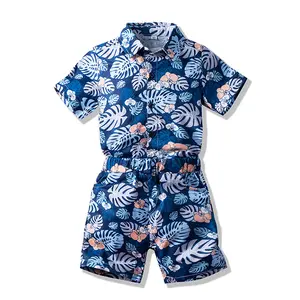





Histar卸売高品質高炭素スピニングロッド1.90m1.96m超軽量ロングハンドルカーボンファイバー釣り竿
すぐに出荷可能
JP¥15,027 - JP¥20,980
最小注文: 1 ピース
1個あたりの配送: JP¥0






Langsheng売れ筋ボートフィッシングトローリングロッド30-50lbs50-80lbs80-130lbsクラスe-glass5'6 'グラスファイバーボートロッド
JP¥4,751 - JP¥6,651
最小注文: 2 ピース







2.1m 2.4m 2.7mポータブル4セクションカーボンファイバーファストアクションフライフィッシングロッド、コーデュラチューブバス釣り竿付き
JP¥16 - JP¥3,246
最小注文: 10 ピース


















XDL新しいアップグレード210cm6.89ft2セクションFUJIガイドブランクスピニングチューブカーボン釣り竿サーフキャスティング鋳造スピニングロッド
JP¥7,178 - JP¥8,614
最小注文: 1 ピース

FJORD ABS Plastic Triple Tube Boat Yacht Fishing Tools Fishing Rod Holder For釣竿
JP¥871 - JP¥1,188
最小注文: 20 ピース


















Spinpoler新しい1.98mポータブルジャーニートラベル釣り竿7g-21gカーボン4セクションスピニングキャスティングロッド、チューブミディアムパワー
すぐに出荷可能
JP¥4,415 - JP¥4,747
最小注文: 2 ピース
1個あたりの配送: JP¥1,883


















9フィート用チューブ、7ピースロッド5/6ダイキャストリール9フィート5xフライリーダーフライフィッシングロッドとリールセットコンボフライラインルアー付き
JP¥5,226 - JP¥5,701
最小注文: 50 ピース


















2.74 M7セクション高炭素繊維フライ釣り竿5 #9フィートフライ釣り竿プラスチックチューブ付き
すぐに出荷可能
JP¥6,051 - JP¥9,184
最小注文: 1 パック
1個あたりの配送: JP¥3,028












Spinpoler新しい1.98mポータブルジャーニートラベル釣り竿7g-21gカーボン4セクションスピニングキャスティングロッド、チューブミディアムパワー
JP¥3,120 - JP¥3,959
最小注文: 30 ピース






富士淡水スーペリアフィッシング3セクションコイロッドシュリンクチューブハンドルベストセラーカーボンファイバーブラック2個ハードファスト3.0M
JP¥6,334 - JP¥7,917
最小注文: 100 ピース
チューブ釣り竿について
あなたの子供、姪または甥のための完璧なかわいい仲間を探しているなら、Alibaba.com以上のものを探す必要はありません。 チューブ釣り竿。猫、クマ、犬、象、鳥、虎など、さまざまな色と愛らしい品種があります。これら。 チューブ釣り竿は、子供とすべての大人の子供を同じように喜ばせるはずです。チューブ釣り竿は、子供たちが共感を育むための重要なおもちゃであり、大切な人への贈り物。
。 Alibaba.comで提供されるチューブ釣り竿は、ユーザーの幸福を保証するために一連の安全性テストを受けた最高品質の素材から作られています。鋭利な内部プラスチックやワイヤーはなく、皮膚の炎症を引き起こさないように特別に設計されています。これら。 チューブ釣り竿は、軽量で柔らかく、持ち運びに便利なように設計されています。いくつか。 チューブ釣り竿には、音声を鳴らしたり、音声メッセージを録音したりする機能など、魅力的な機能も追加されています。
チューブ釣り竿は、家庭用ペット、海洋動物、絶滅危惧種など、さまざまな種類やコレクションで利用できます。これら。 チューブ釣り竿はギフトに最適で、保育園用の小さいサイズから、数フィートまでの大きいサイズで利用できます。チューブ釣り竿漫画に関連するアニメ映画も提供されており、子供たちに大人気です。
最も柔らかいものを選択してください。 チューブ釣り竿子供向けまたはAlibaba.comでのギフト目的で品質を犠牲にすることなく最低価格で.. チューブ釣り竿卸売業者やサプライヤーもISOを見つけることができます大量購入のための手頃なオファーでのCE認定製品。最も信頼できる売り手とメーカーが提供する製品は、安全性について十分にテストされていますのでご安心ください。
。 Alibaba.comで提供されるチューブ釣り竿は、ユーザーの幸福を保証するために一連の安全性テストを受けた最高品質の素材から作られています。鋭利な内部プラスチックやワイヤーはなく、皮膚の炎症を引き起こさないように特別に設計されています。これら。 チューブ釣り竿は、軽量で柔らかく、持ち運びに便利なように設計されています。いくつか。 チューブ釣り竿には、音声を鳴らしたり、音声メッセージを録音したりする機能など、魅力的な機能も追加されています。
最も柔らかいものを選択してください。 チューブ釣り竿子供向けまたはAlibaba.comでのギフト目的で品質を犠牲にすることなく最低価格で.. チューブ釣り竿卸売業者やサプライヤーもISOを見つけることができます大量購入のための手頃なオファーでのCE認定製品。最も信頼できる売り手とメーカーが提供する製品は、安全性について十分にテストされていますのでご安心ください。
















































































































































